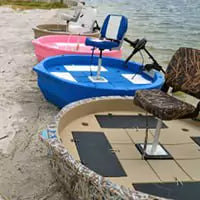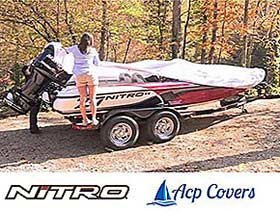Can you sink a roundabout boat?

Navigating the Waters: A Deep Dive into Roundabout Boats
Unraveling the Mystique of Circular Designs in Watercraft
A roundabout boat is a unique watercraft characterized by its circular design, setting it apart from traditional boat shapes. The defining feature of a roundabout boat is its circular hull, which distributes weight evenly around the perimeter. This design is intended to enhance stability and minimize the risk of capsizing, making roundabout boats particularly popular for recreational use. The circular configuration allows for a buoyant platform that provides a stable and comfortable experience on the water. These boats come in various sizes and are equipped with amenities suitable for different activities, such as fishing, cruising, or simply enjoying a leisurely day on the water. The innovative design not only offers practical advantages but also lends a distinctive and eye-catching aesthetic to these vessels, making roundabout boats a fascinating and sought-after option for boating enthusiasts.

Navigating the Myth: Can You Sink a Roundabout Boat?
Roundabout boats, with their unique circular design and promise of stability, have become increasingly popular in recent years. Boasting a buoyant platform that seemingly defies the laws of capsizing, these vessels have sparked curiosity and debate among boating enthusiasts. One lingering question that often arises is whether it's possible to sink a roundabout boat. In this blog post, we'll delve into the physics, engineering, and real-world experiences to determine if these floating circles can truly be sent to the depths.
The Science Behind Roundabout Boats
Roundabout boats are characterized by their circular hulls, which, in theory, distribute weight evenly around the perimeter. This design is intended to provide enhanced stability and prevent the boat from tipping over. The buoyancy of the hulls and the circular shape contribute to the boat's ability to remain upright, even in choppy waters.
However, the science of buoyancy and stability is not foolproof. While roundabout boats are less prone to capsizing than traditional boats, they are not immune to the laws of physics. Factors such as weight distribution, load capacity, and the size of the waves can still impact the boat's stability.
Real-World Experiences
To determine whether a roundabout boat can be sunk, it's essential to consider real-world experiences and anecdotes from those who have spent time on these vessels. Many roundabout boat owners attest to the remarkable stability of their boats, even in adverse conditions. However, there have been instances where these boats faced challenges.
In situations where the weight distribution is uneven or the boat is overloaded, stability can be compromised. Additionally, extreme weather conditions and large waves may pose a threat to the balance of a roundabout boat. While sinking a roundabout boat may not be a common occurrence, it's crucial for boaters to be mindful of their boat's limitations and adhere to recommended weight capacities.
Maintenance and Safety Measures
Like any watercraft, roundabout boats require regular maintenance to ensure they remain seaworthy. Issues such as leaks, hull damage, or mechanical failures can compromise the boat's integrity and increase the risk of sinking. Proper maintenance, regular inspections, and adherence to safety guidelines are essential to minimize the likelihood of accidents.
The Intriguing Buoyancy of Roundabout Boats with Water Onboard
Roundabout boats, with their unique circular design, have captured the attention of water enthusiasts worldwide. These vessels, often praised for their stability and resistance to capsizing, leave many wondering: what happens when water breaches the deck? In this blog post, we'll explore the fascinating world of roundabout boat buoyancy and whether these circular marvels can remain afloat even when filled with water.
Understanding Roundabout Boat Design
The hallmark of roundabout boats is their circular hull, designed to distribute weight evenly around the perimeter. This design not only enhances stability but also contributes to the boat's remarkable ability to stay upright. While roundabout boats are less susceptible to tipping over than traditional watercraft, the question remains: can they stay afloat when water finds its way onboard?
Buoyancy at Play
Buoyancy is a fundamental principle governing the floatation of objects in water. The buoyant force exerted on an object is equal to the weight of the water it displaces. In the case of roundabout boats, their buoyancy is primarily dependent on the displacement of water by the circular hull.
When water enters the boat, it displaces air from within the hull, and the buoyant force acting on the boat remains relatively constant. The circular shape of the hull, combined with the buoyancy of the displaced water, helps the roundabout boat maintain its floatation, even with water on board.
Real-World Testing
To put this theory to the test, many roundabout boat owners have conducted real-world experiments, intentionally allowing water to enter their boats to assess their buoyancy. In numerous cases, these boats have demonstrated a remarkable ability to remain afloat, even with a significant amount of water on the deck.
This resilience can be attributed to the boat's design, where the circular shape plays a crucial role in maintaining stability. The displacement of water and the buoyant force acting on the boat work together to counteract the additional weight of the water, preventing the vessel from sinking.
Practical Considerations
While roundabout boats exhibit impressive buoyancy with water on board, practical considerations are essential. Excessive water accumulation can still compromise the boat's stability and handling. It's crucial for boaters to address the source of the water, whether from rain, waves, or other factors, and take appropriate measures to maintain a safe and comfortable boating experience.
Regular maintenance, including checking for leaks and ensuring proper drainage systems are in place, is vital for preserving the buoyant properties of roundabout boats. Responsible boating practices, along with an understanding of the boat's design and limitations, contribute to a safer and more enjoyable experience on these unique vessels.


